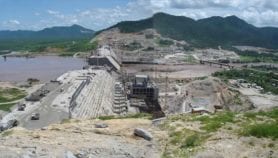Send to a friend
The details you provide on this page will not be used to send unsolicited email, and will not be sold to a 3rd party. See privacy policy.
The Myanmar cyclone and Chinese earthquake highlight the need for effective dissemination of information, both before and after a disaster.
The effectiveness with which a country deals with a major accident or disaster is a revealing indicator of its sensitivity to the needs of its population. It depends heavily on the country’s ability to respond to the population’s need for information, prior to and following the event.
In the mid-1980s, a key factor in the collapse of the communist regime in the Soviet Union was public resentment of the mishandling of information about the near meltdown at the Chernobyl nuclear plant. It took authorities more than 24 hours to publicly acknowledge the accident, and the lack of evacuation strategies added to losses from the disaster.
The recent impact of cyclone Nargis in Myanmar (formerly Burma) and the earthquake in Sichuan province, China, has posed major challenges to both countries in dealing with the event, and handling information about prevention and mitigation.
Each has raised important questions about the failure to integrate scientific knowledge into disaster planning, at the cost of thousands of lives. And each has highlighted the need for accurate communication of information, if the impact of major disasters is to be minimised and if government officials are to be held accountable for their efforts — or lack thereof.
Clearest lesson
In the case of Myanmar, the failures are glaringly obvious.
Firstly, there has been the failure to take on board increasingly widespread knowledge about how the destruction of mangrove forests dramatically increases the vulnerability of coastal populations.
This was one of the clearest lessons of the December 2004 Indian Ocean tsunami and has been acknowledged in other countries, including Bangladesh. But Myanmar authorities seem to have paid little attention to mangrove conservation. UN Food and Agriculture Organization officials say the Irrawaddy delta — the country’s largest mangrove area, where Nargis struck — has lost half its mangrove area since 1975 (see UN: Mangrove loss ‘intensified’ Myanmar cyclone damage).
Secondly, it is clear that the country lacks the comprehensive communication infrastructure — and perhaps even the political will — to ensure that information about impending disasters reaches the areas where it is most needed.
Warnings about the imminent cyclone were posted by the country’s meteorological office. But there was no way of rapidly communicating these warnings to those most in danger. Furthermore, the lack of protection measures meant that even those aware could do little about it.
Widespread praise
In China, the situation has been different. The government has won widespread praise for the speed with which it has acknowledged the size of the disaster and submitted its rescue efforts to international scrutiny — in stark contrast to the Tangshan earthquakes of 1976.
This new attitude has been reflected in the willingness of earthquake specialists to open themselves up to queries from local journalists. In the past, they would have insisted that all such questions be directed to government officials. Through a fortunate accident of timing, a new law on public access to information came into effect on 1 May, requiring them to act differently. But even in China, important questions have been raised.
For example, there is no guarantee that the scientists who have made themselves accessible in an emergency situation will maintain this attitude in less urgent times. In addition to their willingness to deal with the media, scientific institutions must be trained to release information in a fast and comprehensible way.
At the same time, media reporting on baseless rumours of new earthquake shocks has reinforced the need to train science journalists to make their own judgments about when to trust apparently scientific statements.
Equally important is the need for some probing journalism into why so many schools collapsed, particularly when buildings around them often remained standing. In many cases, the problems appear to have been caused not by a lack of scientific or technical information, but by a failure to put information to use.
Intense pressure
Increased openness is not without cost. The more the Soviet government unveiled information about the Chernobyl disaster, the greater became the criticism of its failure to protect its citizens.
Undoubtedly, this fear lies at the heart of the situation in Myanmar. The sight on state-run television of the country’s prime minister visiting a few hastily erected camps for survivors — all looking remarkably well-fed — is far less likely to generate internal criticism than film of bloated bodies and starving children almost three weeks after the cyclone.
In the long-term, attempts to impose heavy-handed restrictions on the coverage of disasters, particularly in an era of global electronic communication, will inevitably be counterproductive. As they learn more about the reality of the situation, the less confidence they will have in those who tell them that the situation is different.
Providing citizens with the information they need to protect themselves against future cyclones or earthquakes is a crucial role for science communicators. Identifying the political or other obstacles that prevent this information from getting through or being put into practice is potentially even more important.
David Dickson
Director, SciDev.Net
Jia Hepeng
China coordinator, SciDev.Net
See also:
Jia Hepeng, Communicating disaster













